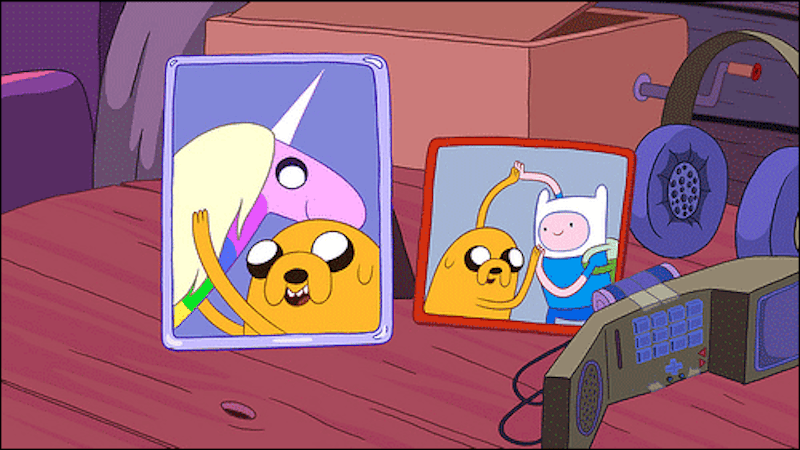You can overlay Freud’s psychic apparatus on any entertaining show and emerge with a very clear picture of exactly why it works. It’s the odd-couple pairing of the id and the superego (and in some cases, the ego) that creates the conflict, friction, and humor that generally makes for good entertainment: Michael Scott versus his employees, Mr. Mxyzptlk versus Superman, Picard versus Q, or in the most traditional sense, Felix versus Oscar. Humor is partially defined by its incongruity.
Great entertainment happens when these three roles are shifted in unexpected ways, and there’s no greater vehicle for this than cartoons, though they rarely embrace the freedom of the medium. When Cartoon Network puts out a new show, it’s usually an epic puberty metaphor about an overconfident boy with strange powers who goes through the process of learning how to use them within the scary world around him. Once in a while, the formula is broken and something glorious happens. That thing is Adventure Time with Finn and Jake.
Adventure Time approaches storytelling with the kind of unabashed glee that seems like it was conjured by the mind of a child (see: Axe Cop), or a brain steeped in Dungeons and Dragons and the very best aspects of pop surrealist art, like the subconscious doodles in the margins of a notebook during a math lesson have been imbued with life. Frequent (though generally nonsensical) references to mathematical terms throughout the show feel like bits of information that slip through the distraction of waiting for the bell to ring, shading in the lower edge of a deadly, laser-shooting Battle Cube, so it looks just right.
Finn is a 12-year-old kid with a perfectly black-and-white idea of what it is to be a hero, and no hesitation to slay anything that stands between him and heroism. Jake is a 28-year-old dog with unlimited powers. There’s no real backstory, there’s no complicated explanation about why a kid is hanging out with a talking dog, there’s no theoretical limits placed on Finn and Jake’s adventures, apart from a unique set of basic, malleable physics. It just is, and that’s the kind of unrestrained, uncomplicated storytelling that makes it beautiful. Even The Powerpuff Girls had an origin that was ret-conned a few times.
Finn and Jake are characters that represent the ego aspect of the apparatus, or the place where order and chaos meet. While a cartoon series based around two noble, altruistic, average guys doesn’t really have an appeal by itself, their entire world is an absorbing miasma of id. The name of their world is even an expression of amazement: Ooo. If the Land of Ooo wasn’t populated by a huge array of giants, unicorn-rainbows, vampires, talking clouds, princesses, trolls, wizards, demons and werewolves, and just about anything you can possibly conjure form a third edition Monster Manual or a Lisa Frank folder, the show would still be about two completely charming guys, but let’s be honest: we watch scary movies for the monsters and Star Wars for the aliens. In a world where anything can exist, the possibilities are too exciting to fathom. The excellently designed enemies-du-jour is a powerful driving force.
And Finn and Jake are fun. They think that butts are funny, and they’re a little shy around girls. They sing and dance, rescue orphaned creatures, and have a deep love for the sense of order that they’re able to maintain throughout their world. It’s a rare show that’s defined by its very lack of definition and it’s innate wisdom, derived from the innocence of childhood and the battle-worn spirit of adulthood. It’s cartoons in their purest, most effective form: spanning generations of appeal, a little profane, and friendly without any hint of sappiness.

